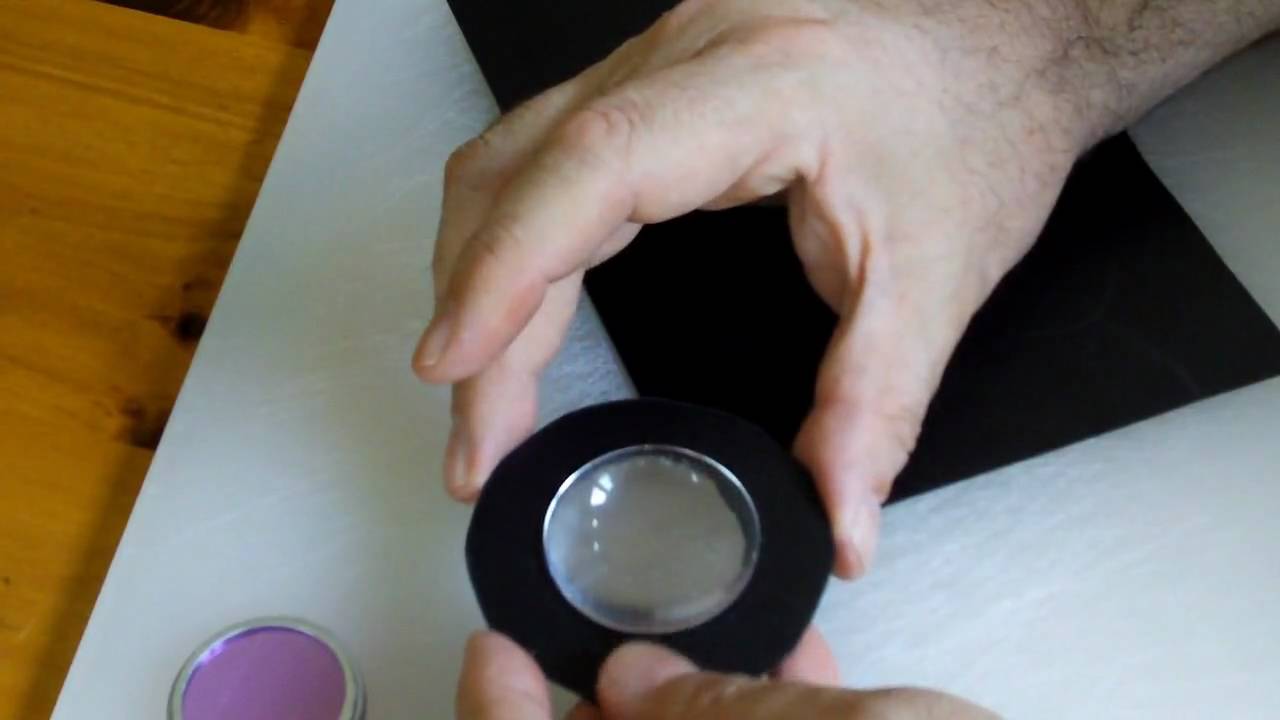Build your own LEEP style wide field of view head mounted display optics. Check out the instruction video and parts list below.
In the late 80’s and early 90’s wide field of view head mounted displays were all the rage; immersion was everything! The dominant HMD vendors, VPL Research and Virtual Research shared the same optical implementation: lenses from LEEP Systems. These wide angle optics (designed by Eric Howlett of LEEP), coupled with 2″ or 3″ LCD screens really did deliver a totally immersive visual experience…except that the resolution of the LCDs were so low that under this extreme magnification each pixel looked like a football; you were swimming is a sea of colored footballs!

LCD Screens and LEEP Optics
By the mid 90’s (and up to the present) a primary design criteria for head mounted displays was small size and light weight. Indeed there are entire head mounts that weigh only a few ounces and look almost like sunglasses. Sadly, immersion and wide field of view were abandoned. The new generation of head mounts had 20 – 30 deg. field of view. You felt like you were looking through a distant window.
For reasons which I will cover in a forthcoming post, wide field of view and small/light head mounted displays are mutually exclusive. Anatomy and physics bars the way.
Almost 20 years ago I demoed an early Virtual Research Flight Helmet complete with LEEP optics. Being very impressed but unwilling to drop six grand into my first head mount, I set about building my own. The Radio Shack LCD TVs that I found were very similar to the Sony TVs in the Flight Helmet and I set about installing everything in a Friday The 13th style hockey mask. The optics were my biggest challenge, but the answer was buried in Eric Howlett’s LEEP patent, not as a claim, but as a demonstration of how to achieve wide FOV with conventional optics.
So… here’s a brief video recreating that optical design from 1991. I’ve cheated a bit by using my Android phone as the LCD screen, but otherwise the optical path is essentially the same. Aside from the phone, there’s about $25 in parts for a single eyepiece and it can display almost 90 deg. (diag.) field of view. The lens mounting is extra cheesy, but it demonstrates the optics quite well, and only takes 5 min. to assemble. So without further ado…
[youtube]https://www.youtube.com/watch?v=G1ovJ1H9sEY[/youtube]
In the video I mention that someone needs to write an Android application to make it into a fully tracked head mount. After editing the video I remembered and tried out a couple of popular Android apps: Google Sky and Layar, both of which use the position sensors for a full 3D view. They work great with this lens system!
Parts List:
- Anchor Optics Plano Convex Lens AX73263 43mm dia. x 77.0mm FL – $10.50 (Eyepiece)
- Anchor Optics Double Convex Lens AX73424 62.8mm dia. x 72.4mm FL – $13.50 (Objective)
- 2″ PVC Coupler
- Small Sheet of Polystyrene plastic – 0.030 Black Sheet
If you were building this for real, you’d spray paint all the plastic parts to a black matte finish. LEEP also beveled the edges of the eyepiece lenses to make a better fit with the nose. To reduce weight, switch from glass lenses to CR39 plastic lenses.
If you assemble 2 of these with LCDs, you may find that the eyepieces are too far apart to match your eye spacing. Simply turn the two optical assemblies so that the LCDs point slightly outward and the eyepieces come closer together. Then apply 3M Press-On Fresnel Prisms.

